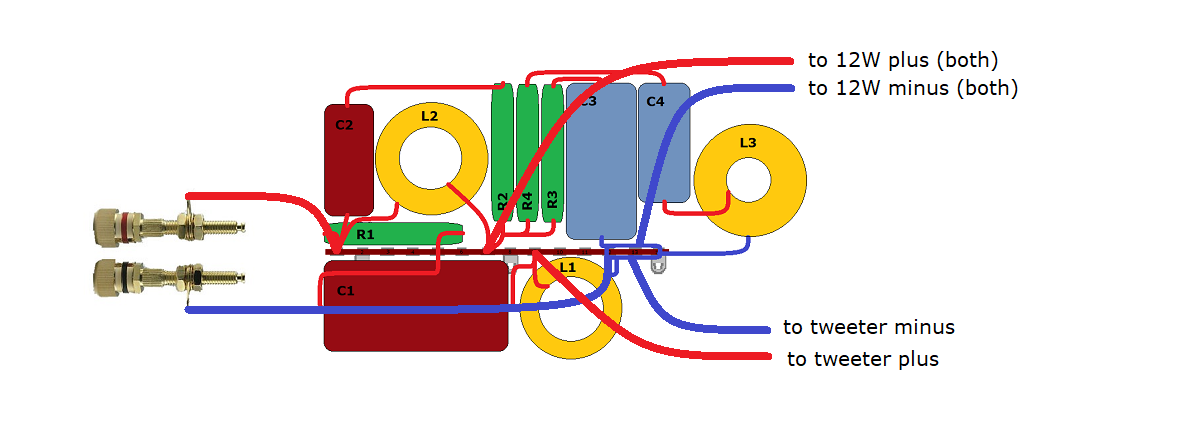ScanSpeak
Soundbar
Copyright 2024 © Troels Gravesen
Go to on this page:
DRIVERS CROSSOVER CABINET WORKSHOP PICS MEASUREMENTS SPEAKER-KIT CROSSOVER LAYOUT
Jann Evers, Director of Sales, ScanSpeak, asked me to do a soundbar for
their exhibition at
Soundsociety
2024 in Copenhagen. A task well received, as I had for long wanted
to improve the sound from our own TV. Jann had tested the
ARYLIC B50
amplifier at home and found it to deliver excellent sound - not least
taking the price into consideration; I mean 140 EUR here in Europe...
Now, soundbars usually require fairly small speaker drivers, thus I
picked the 12W drivers from the ScanSpeak Discovery line. I've used
these drivers before and was always impressed by the magnificent
midrange reproduction. Here we use 2 pcs 12W/8524G00 in parallel and we
can manage a system sensitivity around 89 dB, quite nice for such small
speaker. And even at this tuning they do some bass, F3 = 65 Hz. Two
times 12W makes some 118 cm^2 membrane area, equivalent to an SBA MW16
driver, so not so small after all.
For treble, well, the choice was obvious having tested the new
Illuminator tweeter D3004/602200. Maybe a little expensive here, but actually
the only one having a suitable small faceplate. I can only say that I'll
be using the tweeter some other time in more conventional hifi speakers,
that's how good it is.
A friend came by having Qubuz on his iPhone and we made the bluetooth
connection - really some enjoyable moments, suggesting a small stereo
setup with some impressive bass performance coming from the small 4"
midbass drivers.

Basics:
3-driver speaker.
Dimensions: 112 x 20 x 16.5 cm, WxDxH.
System sensitivity: ~89 dB/2.8V/1 meter.
Impedance: 4-8 Ohms.
Power requirement: 20+ watts/channel.
Useful links (Please
follow all links before e-mailing!):
http://www.troelsgravesen.dk/tips.htm
http://www.troelsgravesen.dk/tips.htm#CONSTRUCTION_OF_CROSSOVERS
http://www.troelsgravesen.dk/crossovers.htm
http://www.troelsgravesen.dk/LCR-RC.htm
http://www.troelsgravesen.dk/Inverted-Polarity.htm
http://www.troelsgravesen.dk/choices.htm

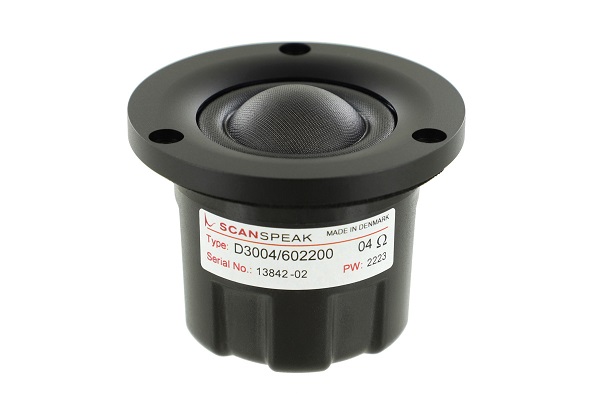
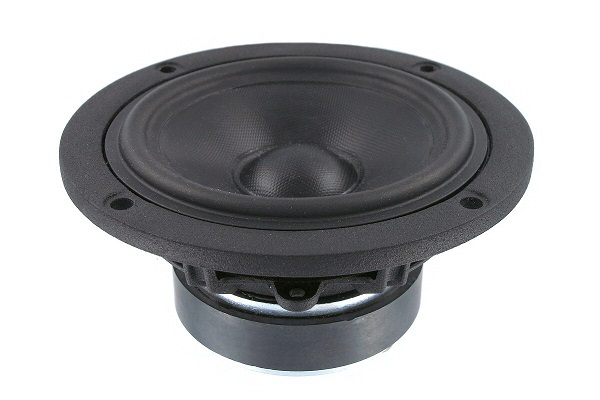
Download specs here: 12W/8524G00 D3004/602200
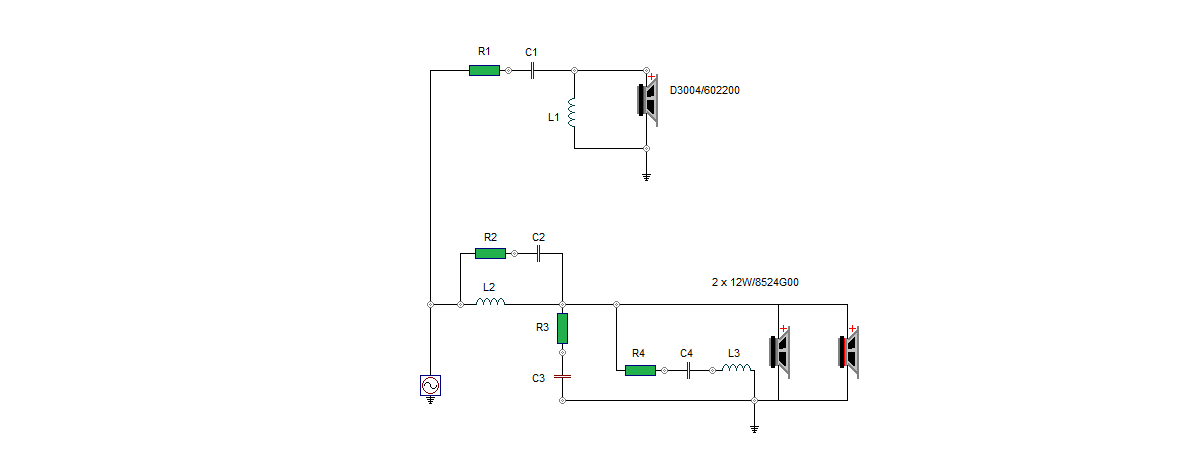
The crossover features an LR4 topology at around 2.5 kHz.
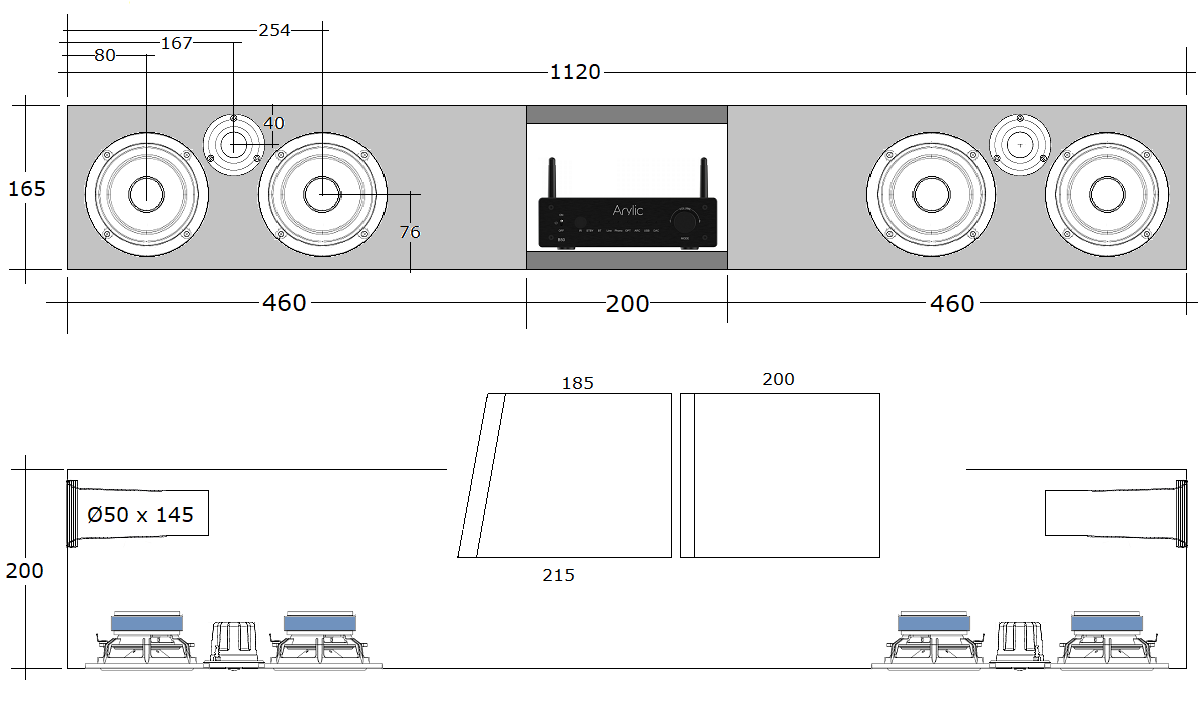
Cabinets were made from 15 and 19 mm black MDF (HDF/Valchromat), 19 mm
for top and bottom. Front panel may be tilted ~10o, if so,
keep 200 mm depth of middle of cabinet. This makes 185 at top and 215 at
bottom.
Ports are 145 x Ø50 mm.
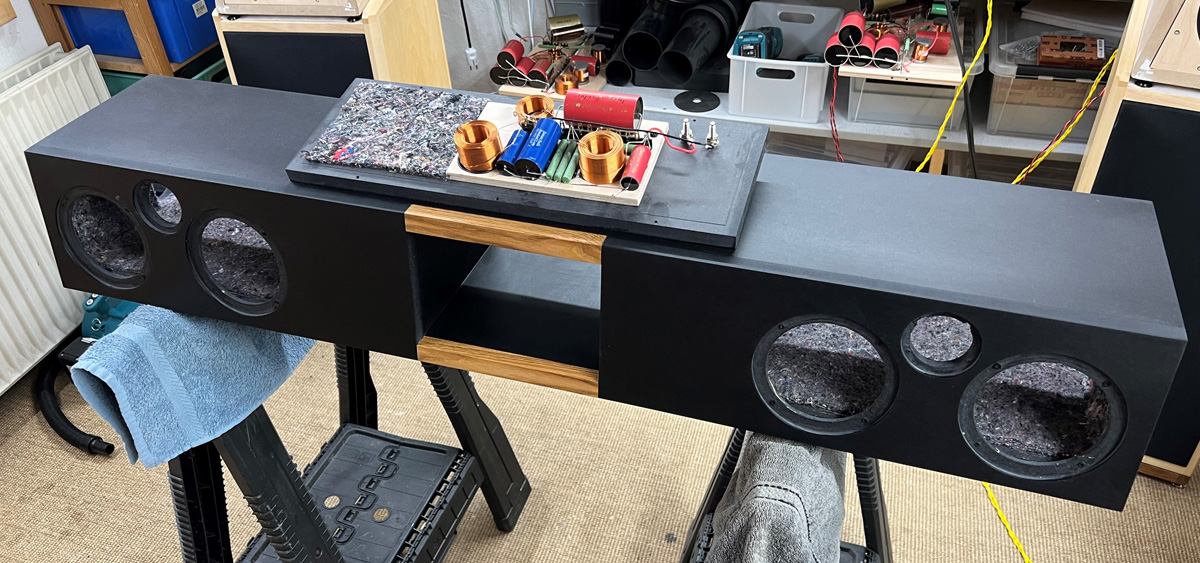
Soundbar seen from front with center
placement of Arylic amplifier.
I sanded the cabinet and polished with beeswax.
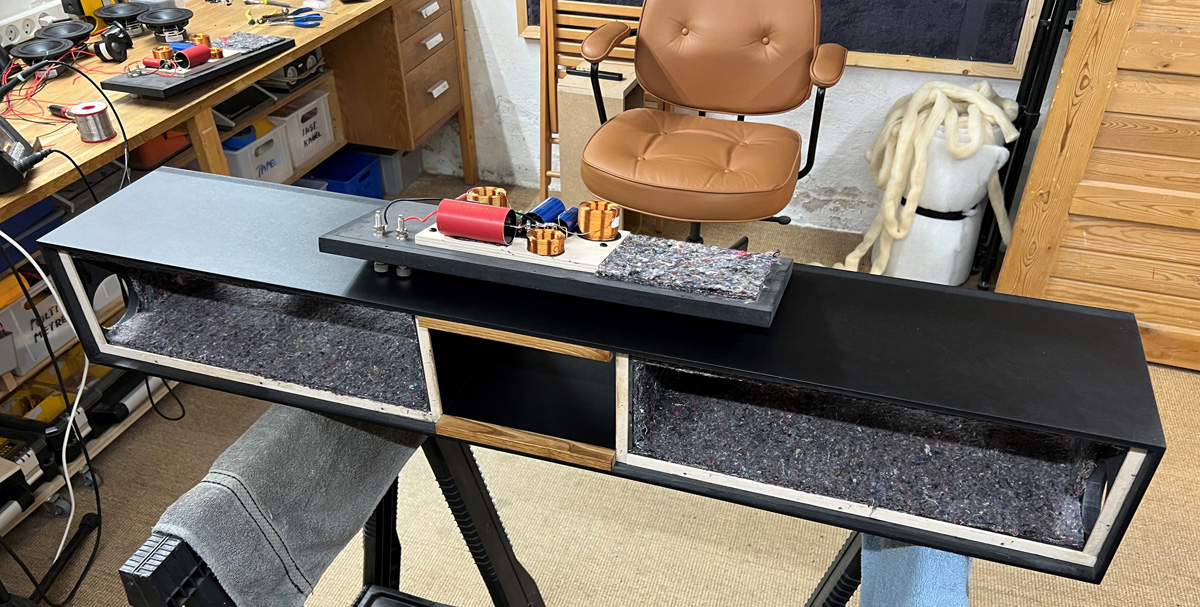
Soundbar seen from rear with rear panels
removed.
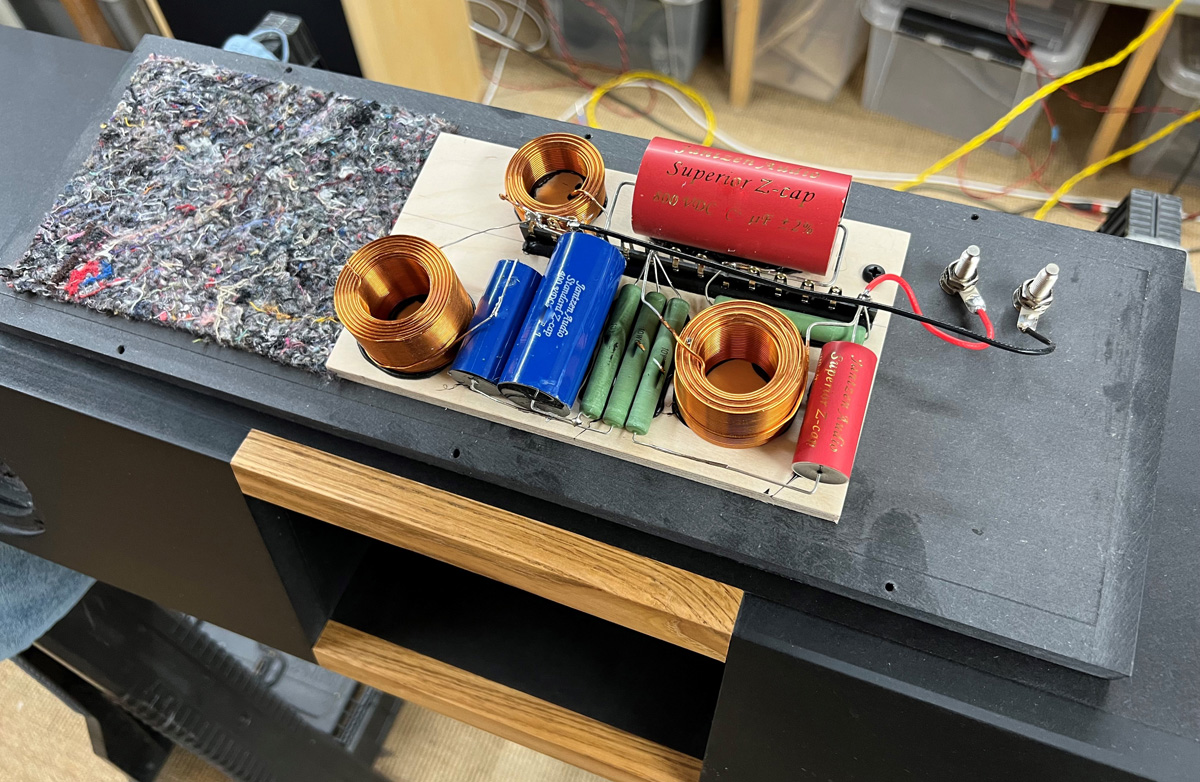
Place crossovers on rear panel and connect to
terminals.
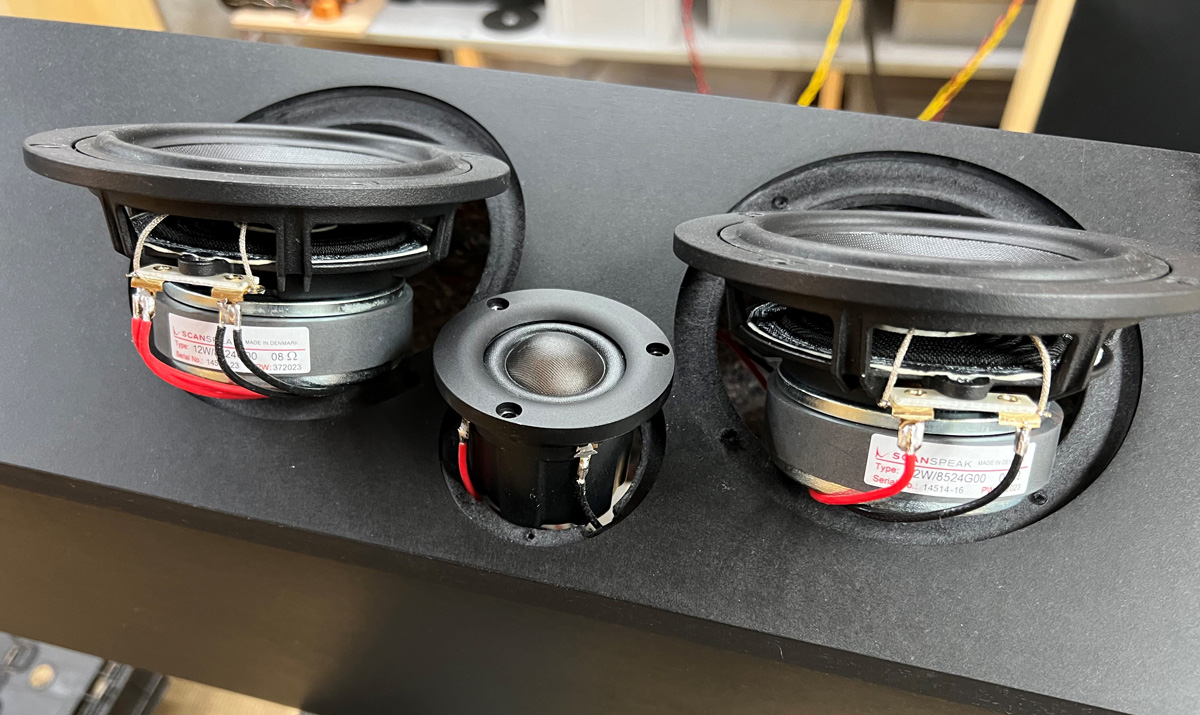
Connect 12W drivers and parallel.
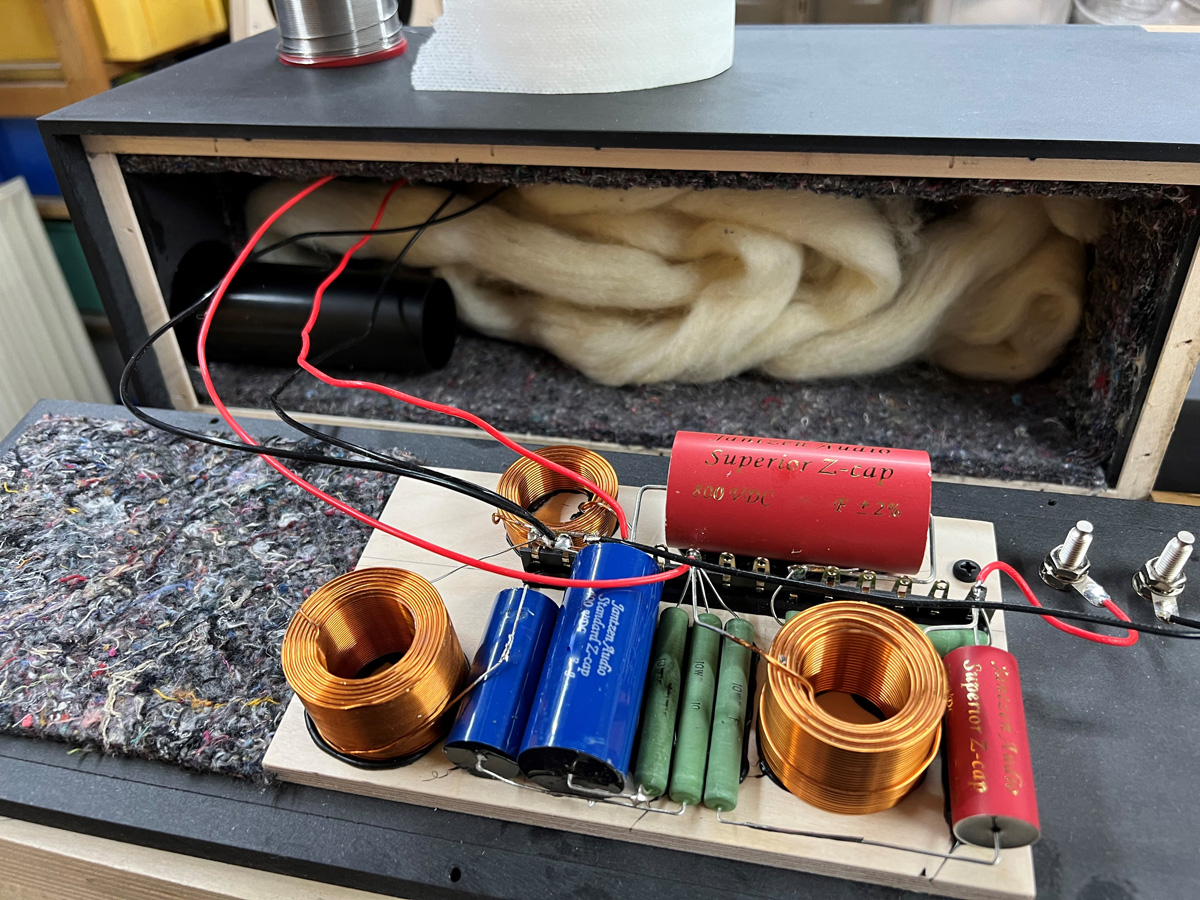
Stuff cabinet with 60 grams of sheeps wool.
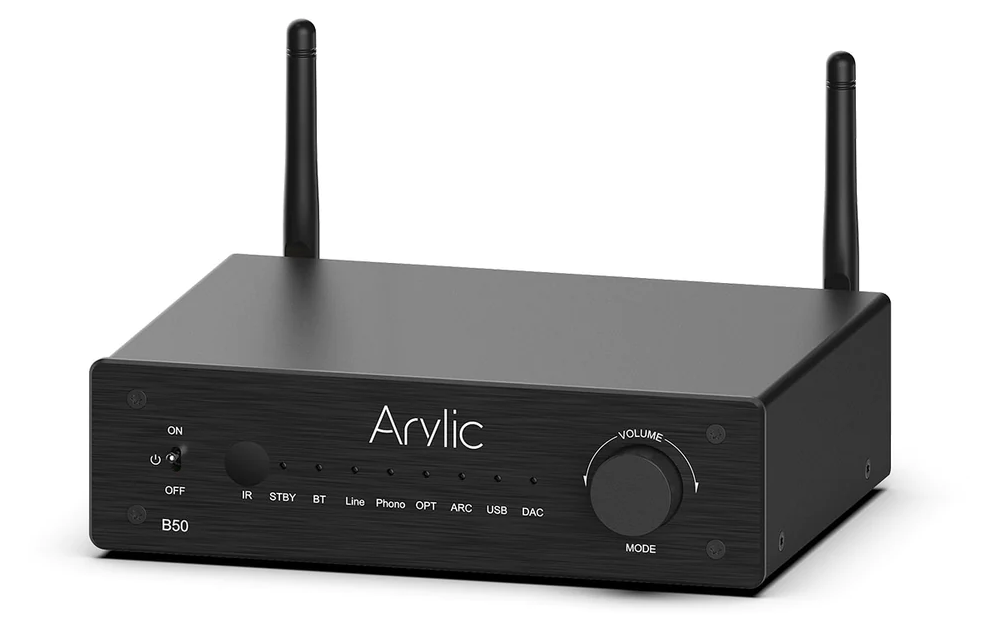
The ARYLIC blue-tooth amplifier.
https://www.arylic.com/products/b50-bluetooth-stereo-amplifier
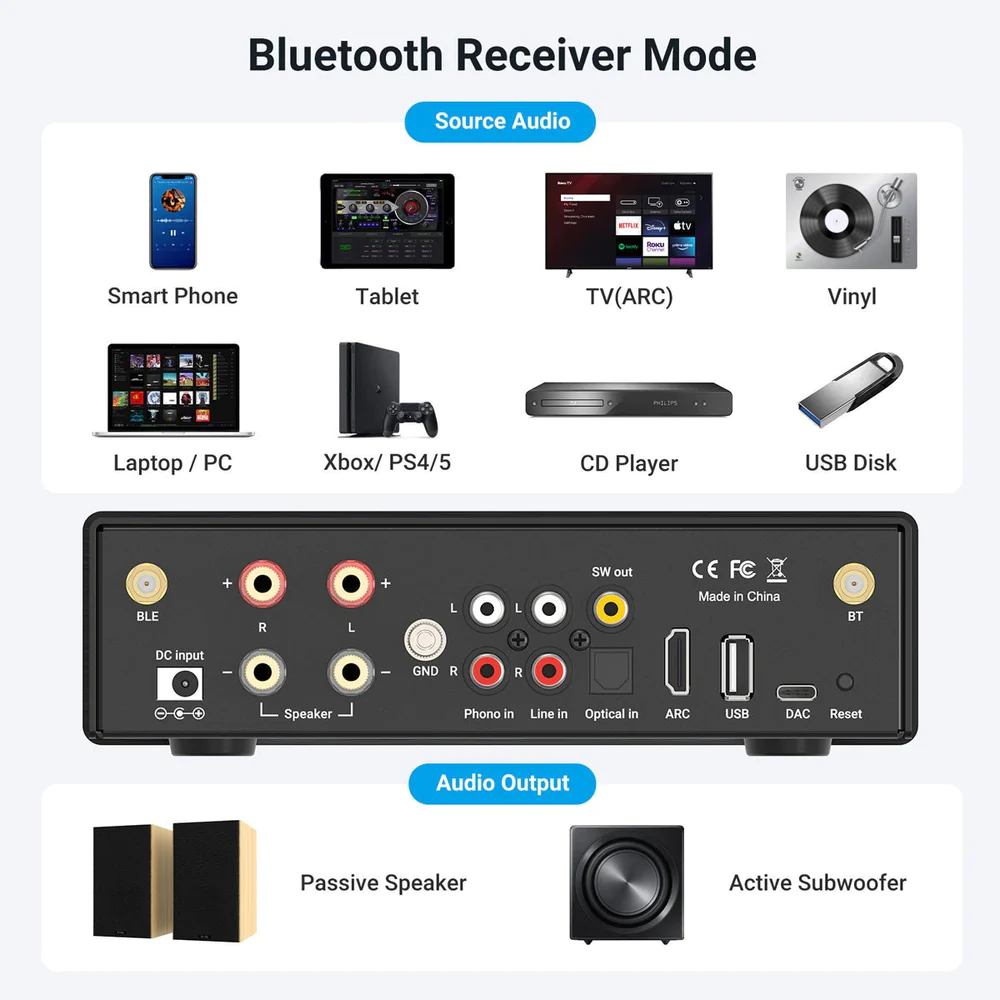
This amp pretty much does everything...even
MM phono input.
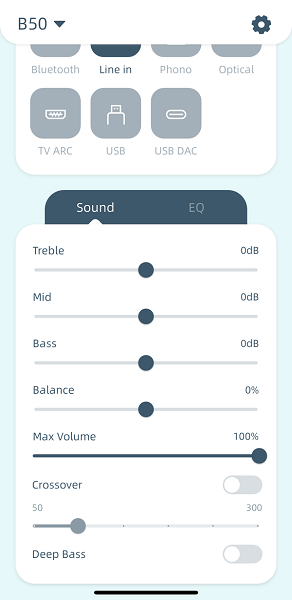
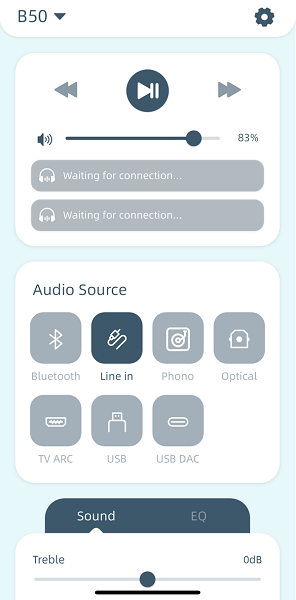
Download app by scanning the code found in
the instruction following the amp and you have it all in the palm of
your hand.

Using the line-in from my EAR-868PL, I have
to say this amp sounds surprisingly good. I'm impressed.
The midrange driven from my EAR-861 was so good I was thinking of using
two of the same in a classic 3-way, why not 2 x 12W mated with the 6022
tweeter and a suitable 10" bass driver?
A few comments on
MEASUREMENTS before you start interpreting the readings below.
First of all, if we think measurements will
tell us how a speaker sounds, we're wrong. The perception of sound is
way too subjective to be reflected in any measurements we can perform. A
loudspeaker system is meant to give us a satisfying idea of an acoustic
event and for some people a pair of 5 USD ear-plugs are enough, others
spend 200 kUSD on a truly full-range pair of speakers - and the latter
may not be happier than the former.
Measurements may give us an idea of tonal balance of a system, i.e. too
much or too little energy in certain areas, although dispersion
characteristics play a vital role here. A two-way 7+1 and a three-way
7+4+1 may display similar horizontal dispersion, yet sound very
different. Measurements may tell us about bass extension if far-field
measurements are merged with near-field measurements. In addition to
this, ports may contribute to bass extension. Most of we diy'ers do not
have access to an anechoic room for full-range measurements from
20-20000 Hz.
What cannot be seen is what kind of bass performance we get in a given
room. Bass performance is highly dependent on in-room placement of your
speaker and the same speaker can be boomy in one place and lean in
another. Actual SPL level at 1 meter distance and 2.8V input is useful
for en estimate of system sensitivity and combined with the impedance
profile may give an idea of how powerful an amplifier is needed to drive
the speaker to adequate levels.
What measurements do not tell is the very sound of the speaker unless
displaying serious linear distortion. The level of transparency, the
ability to resolve micro-details, the "speed" of the bass, etc., cannot
be derived from these data. Distortion measurements rarely tell much
unless seriously bad, and most modern drivers display low distortion
within their specified operating range.
Many people put way too much into these graphs and my comments here are
only meant as warning against over-interpretation. There are more to
good sound than what can be extracted from a few graphs. Every graph
needs interpretation in terms of what it means sonically and how it
impacts our choice of mating drivers, cabinet and crossover design.
What measurements certainly do not tell is the sonic signature of the
speaker, because speaker cones made from polypropylene, aluminum,
Kevlar, paper, glass fiber, carbon fiber, magnesium, ceramics or even
diamonds all have their way of adding spices to the stew. Nor do
measurements tell what impact the quality of the crossover components
add to the sound, from state of the art components to the cheapest of
coils and caps, they all measure the same if values are correct, yet
sound very different.
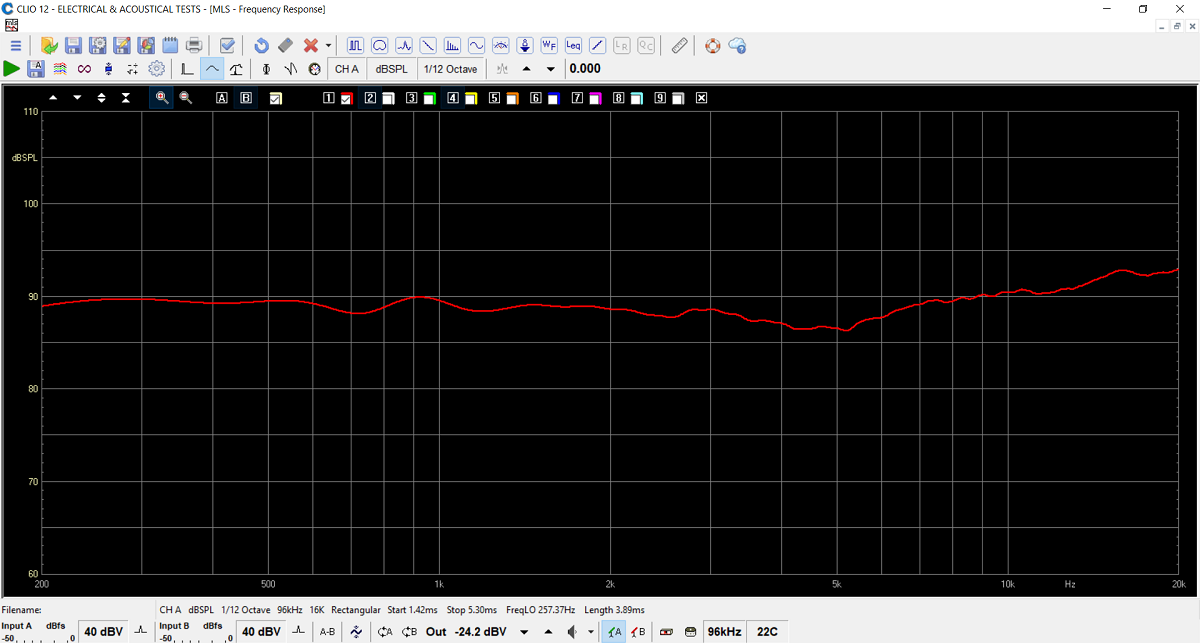
SPL at 0.5 meter normalised for 2.8V/1 meter.
I left the slight increase in upper octave unattended, adds a bit of
airiness to the sound. The 6022 tweeter has an
inherent increase in response towards 20 kHz.
Actually we have some 89 dB sensitivity.
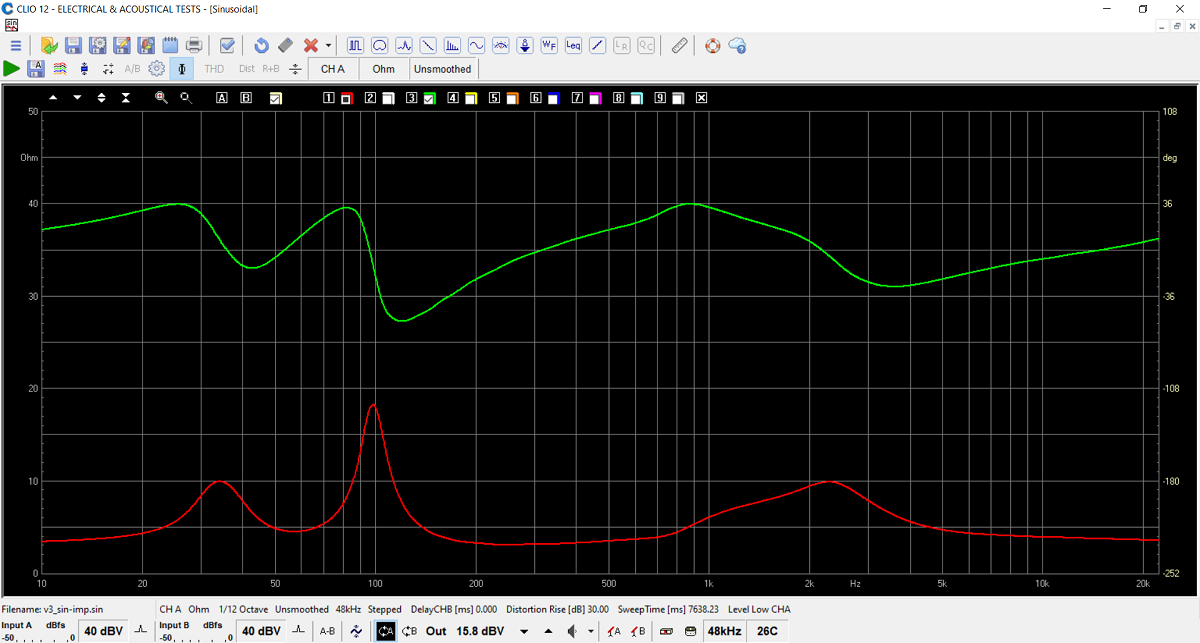
Final system impedance (red). A 4 Ohm
speaker. Suits the amplifier just fine.
Port tuning around 60 Hz.
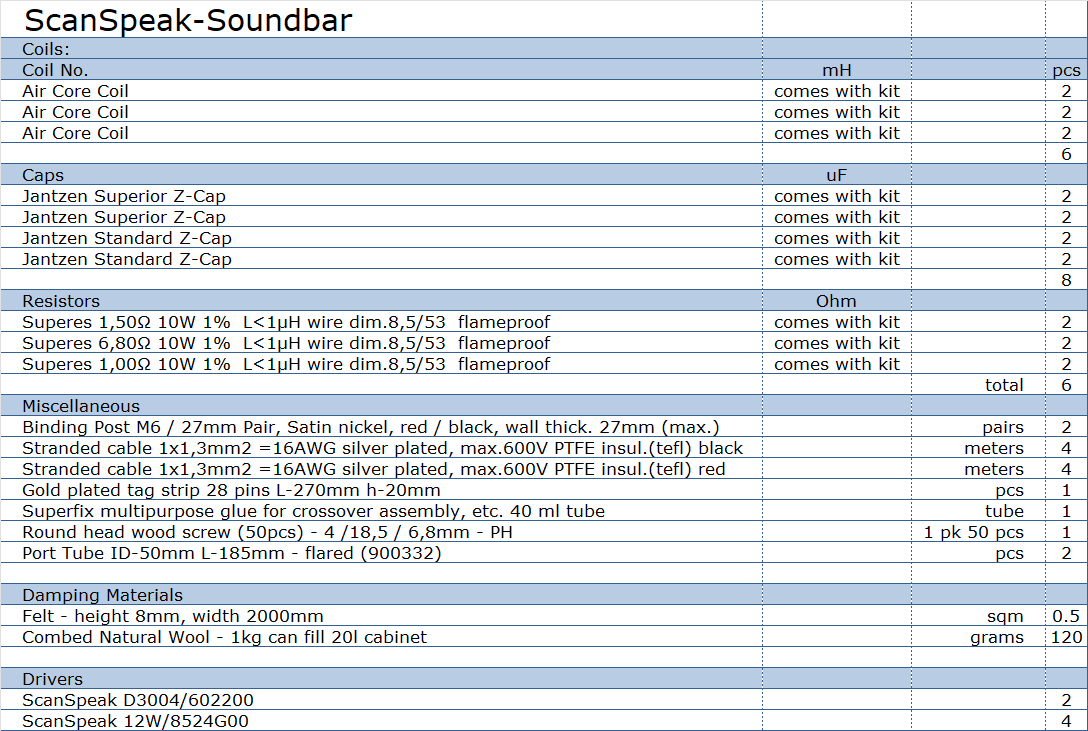
All kit and component prices may be subject to change and are always to be confirmed by Jantzen Audio Denmark.
Kits can always be bought with/without drivers, or some of the drivers.
Download Complete Kit Sale Presentations:
All technical questions to troels.gravesen@hotmail.com
All questions regarding purchase of kits, please mail Jantzen Audio at contact@jantzen-audio.com
CROSSOVER-LAYOUT
BACK TO INDEX
Check this out before start making crossovers:
http://www.troelsgravesen.dk/tips.htm#CONSTRUCTION_OF_CROSSOVERS
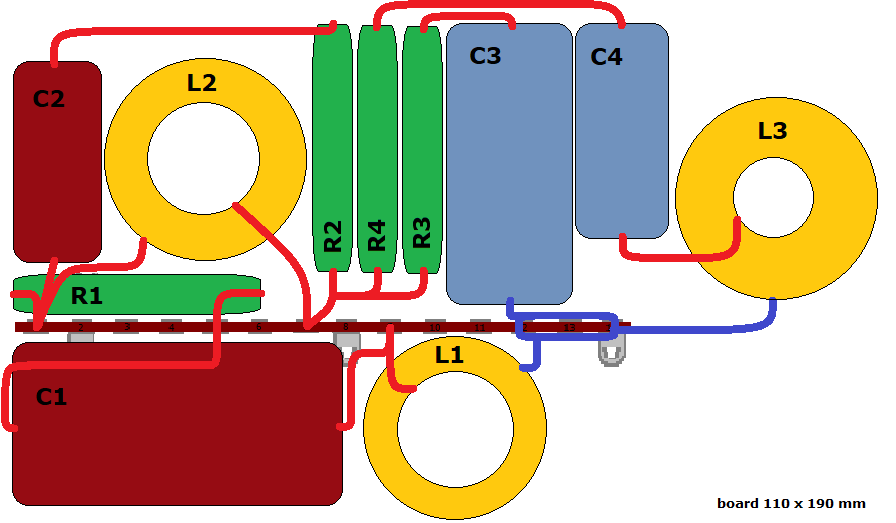
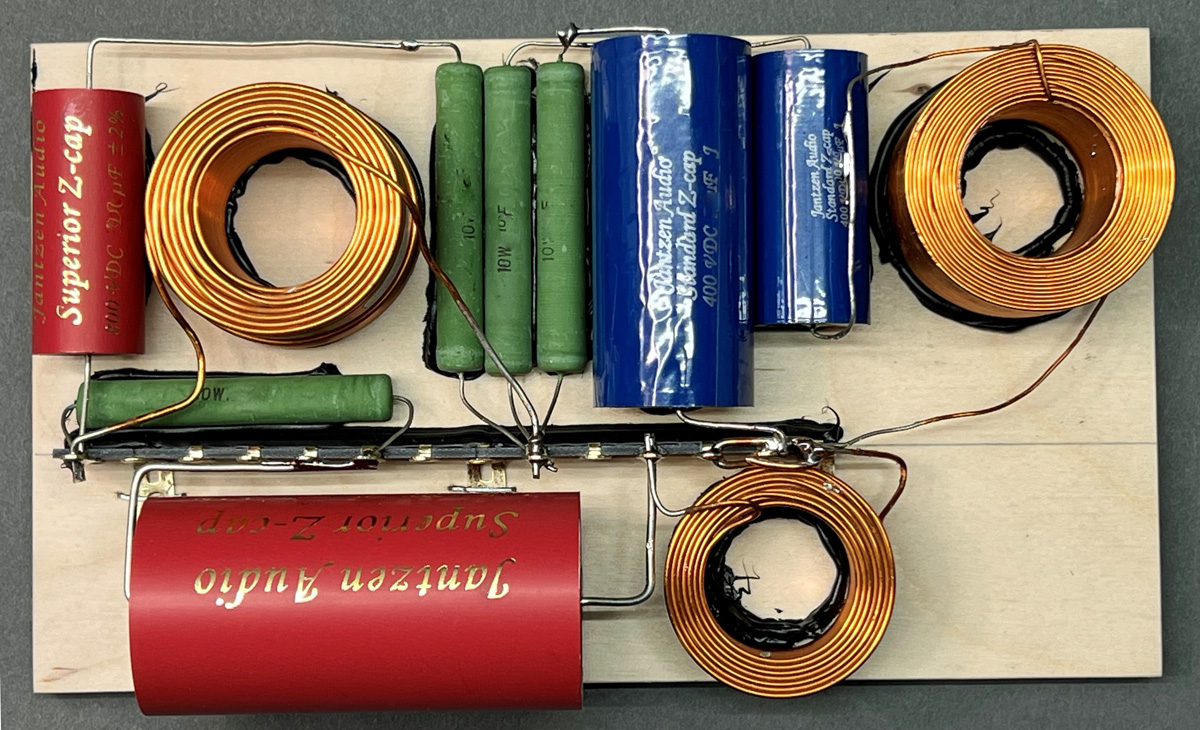
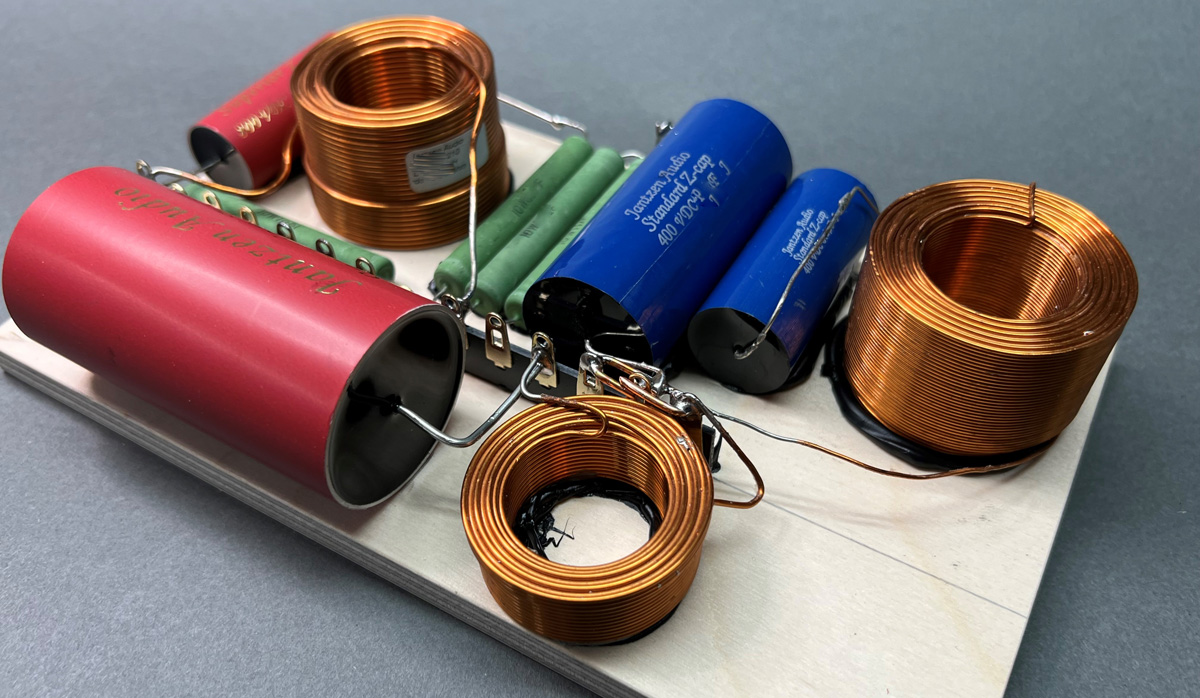
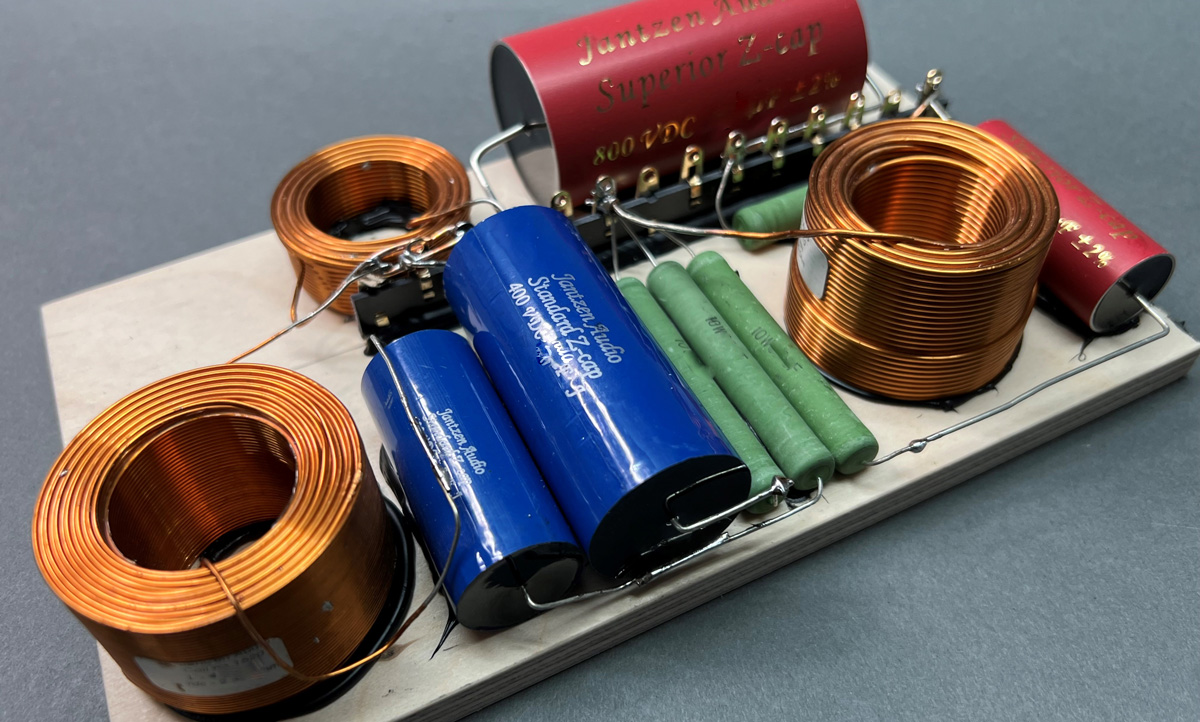
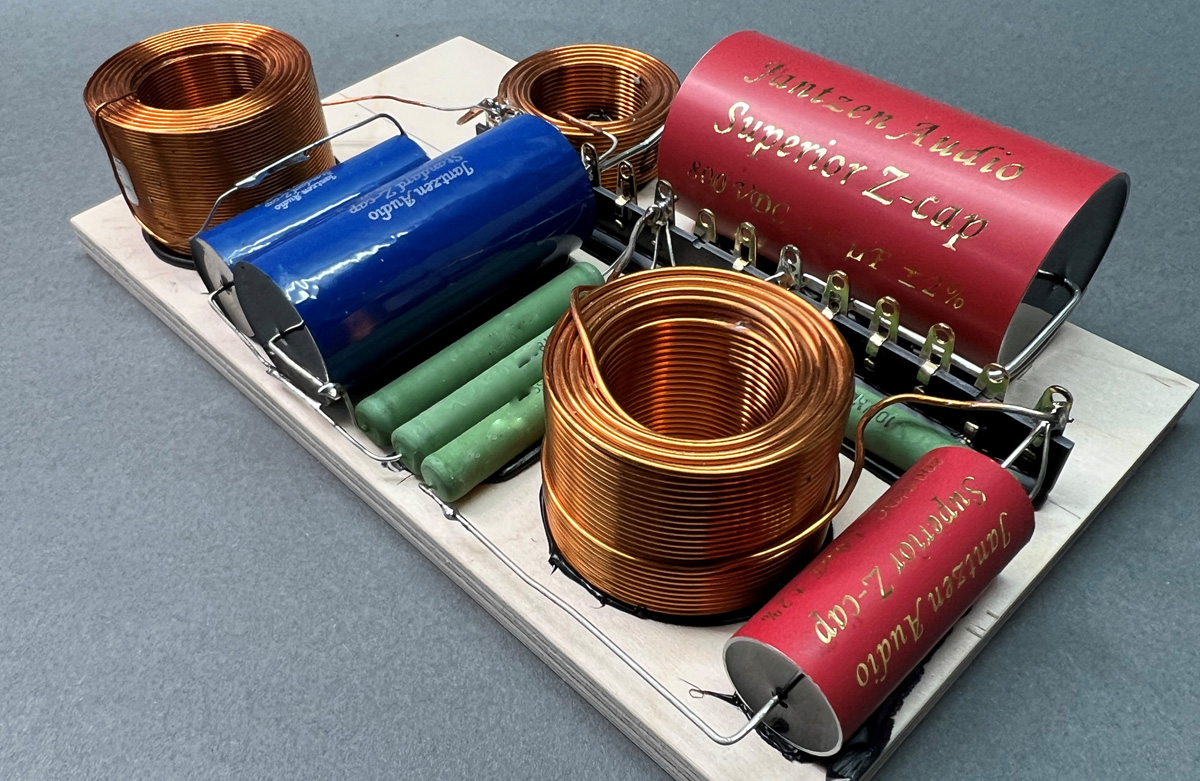
Speaker wiring:
